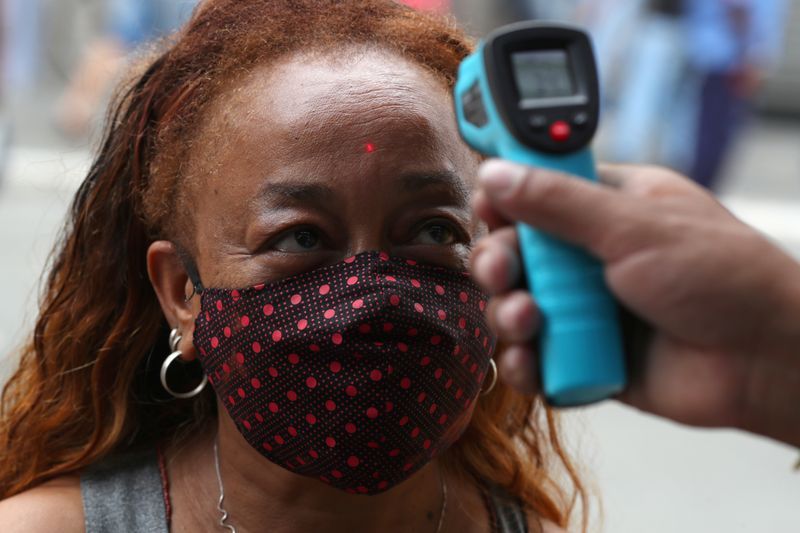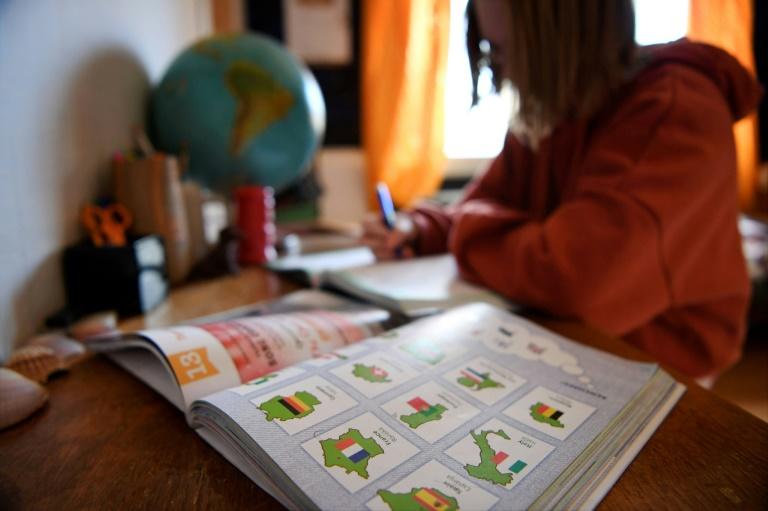Temperature, humidity affects virus life on surfaces, C-section may raise risk for infected mothers
 Outbreak of the coronavirus disease (COVID-19), in Sao Paulo. REUTERS
Outbreak of the coronavirus disease (COVID-19), in Sao Paulo. REUTERSThe following is a brief roundup of some of the latest scientific studies on the novel coronavirus and efforts to find treatments and vaccines for COVID-19, the illness caused by the virus.
Temperature, humidity affect how long virus ‘survives’ on surfaces
A new mathematical model adds to evidence that hotter, dryer conditions may diminish the amount of time virus-packed droplets remain contagious on surfaces. Once droplets emitted by an infected person dry, the virus particles inside it become inactive, researchers said on Monday in the journal Physics of Fluids. “The outdoor weather … determines the duration of drying of respiratory droplets deposited on surfaces. The drying time is linked to the survival of the coronavirus inside the droplets,” coauthor Rajneesh Bhardwaj of the Indian Institute of Technology Bombay told Reuters. “This may not be the sole factor but definitely the outdoor weather matters … and our study provides some evidence for this fact.” Lower temperatures coupled with higher humidity would allow the virus to remain active for longer periods on surfaces, the report found. The researchers also calculated that certain surfaces foster longer virus-activity times. “Our study suggests that surfaces such as smartphone screens and wood need to be cleaned more often than glass and steel surfaces, because droplets form blob-like shapes on the former surfaces and the droplets evaporate slowly on such surfaces, thereby increasing the survival of the coronavirus,” Bhardwaj said.
C-section may be linked to worse outcomes for coronavirus patients
Cesarean delivery may increase health risks for women infected with the coronavirus, a small study from Spain suggests. Among 78 mildly or moderately ill mothers, 13.5% of the 37 who had cesarean deliveries required admission to the intensive care unit (ICU) afterward, compared with none of the 41 who delivered vaginally. About 5% of women who delivered vaginally developed an increased need for oxygen, compared with 21.6% of those who had cesarean deliveries. Cesarean birth was also linked to an increased risk of neonatal ICU admission for the newborn. “Women undergoing cesarean delivery may have been at higher risk of adverse outcomes,” the researchers wrote on Monday in the Journal of the American Medical Association. Even after taking everyone’s risk factors into account, “cesarean birth remained independently associated with an increased risk of clinical deterioration,” possibly because of the extra stress on the body from the surgery itself, researchers said. An observational study like this cannot prove that cesarean deliveries cause infected women to get sicker, however, and more evidence is needed from larger populations.
COVID-19 patients safely share ventilators in tiny trial
Early in the coronavirus pandemic, with intensive care units overflowing with patients struggling to breathe and mechanical ventilators in short supply, doctors discussed the idea of “ventilator-splitting,” or connecting two patients to a single machine. In late March, doctors at one New York City hospital were able to split a ventilator between two surgery patients with similar respiratory needs. Now doctors at the same hospital say they have successfully employed ventilator-splitting in three pairs of COVID-19 patients. Their results in only six patients need to be confirmed in larger studies. In this study, the ventilator-sharing experiment lasted just two days in each pair, whereas severe COVID-19 patients often remain on ventilators for weeks. “Ventilator sharing does not obviate the need for more ventilators,” the research team wrote on Tuesday in the American Journal of Respiratory and Critical Care Medicine. “This approach may be most useful when additional time is needed to relocate ventilators or patients to match supply with demand.” They cautioned that when ventilator-sharing is necessary, it should only be done at medical centers with experience in the techniques.
Experimental vaccine from China shows promise in animals
A coronavirus vaccine candidate being developed by Chinese researchers showed promise in animal studies, triggering antibodies and raising no safety issues, researchers said. A human trial of the vaccine with more than 1,000 participants is underway. In monkeys, rats, guinea pigs and rabbits, two doses of the vaccine candidate, called BBIBP-CorV, induced so-called neutralizing antibodies that can block the virus from infecting cells, researchers reported in the journal Cell. BBIBP-CorV is one of five potential COVID-19 vaccines China is testing in humans.
Antiviral drug remdesivir protects lungs in infected monkeys
Remdesivir, the first medication shown to benefit hospitalized patients with COVID-19 in clinical trials, prevented lung disease in a new study of macaque monkeys infected with the new coronavirus, researchers said on Tuesday in the journal Nature. Twelve monkeys were infected with the new coronavirus, and half were given early treatment with the Gilead Sciences’ <GILD.O> antiviral. The macaques that received remdesivir did not show signs of respiratory disease and had reduced damage to the lungs. Also, the viral load, or amount of virus, in the lungs of remdesivir-treated animals was lower. The authors of the new study say remdesivir should be considered as a treatment as early as possible to prevent progression to pneumonia in COVID-19 patients.
SOURCE: REUTERS











